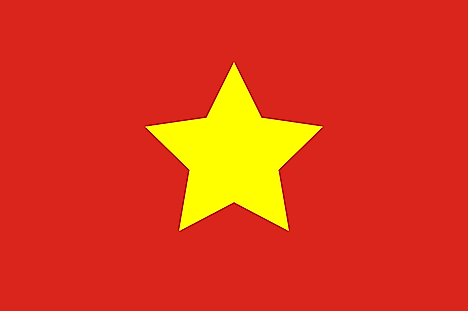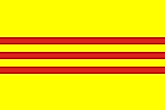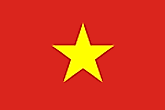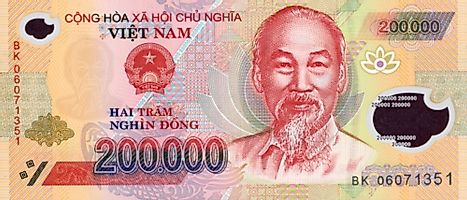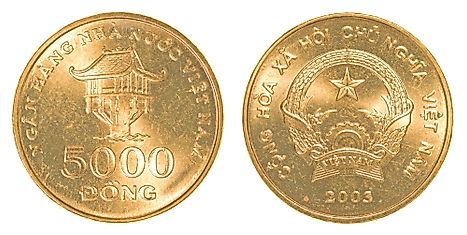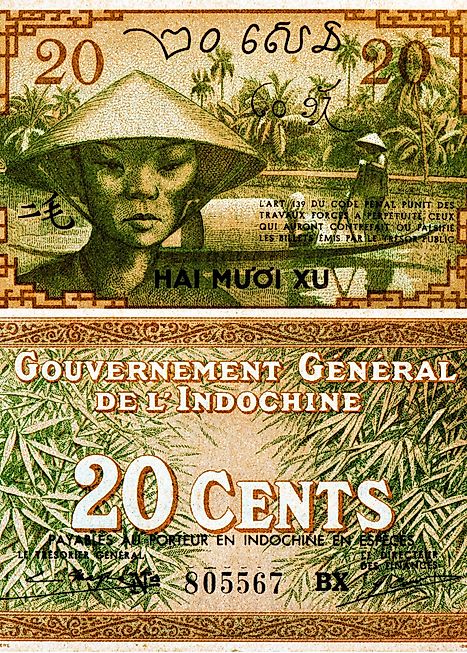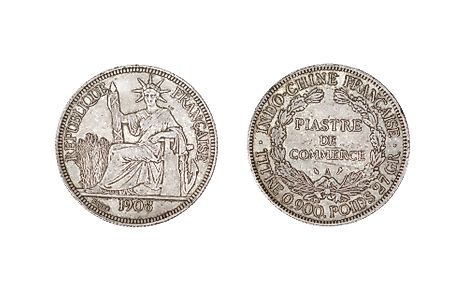Flags, Symbols & Currency of Vietnam
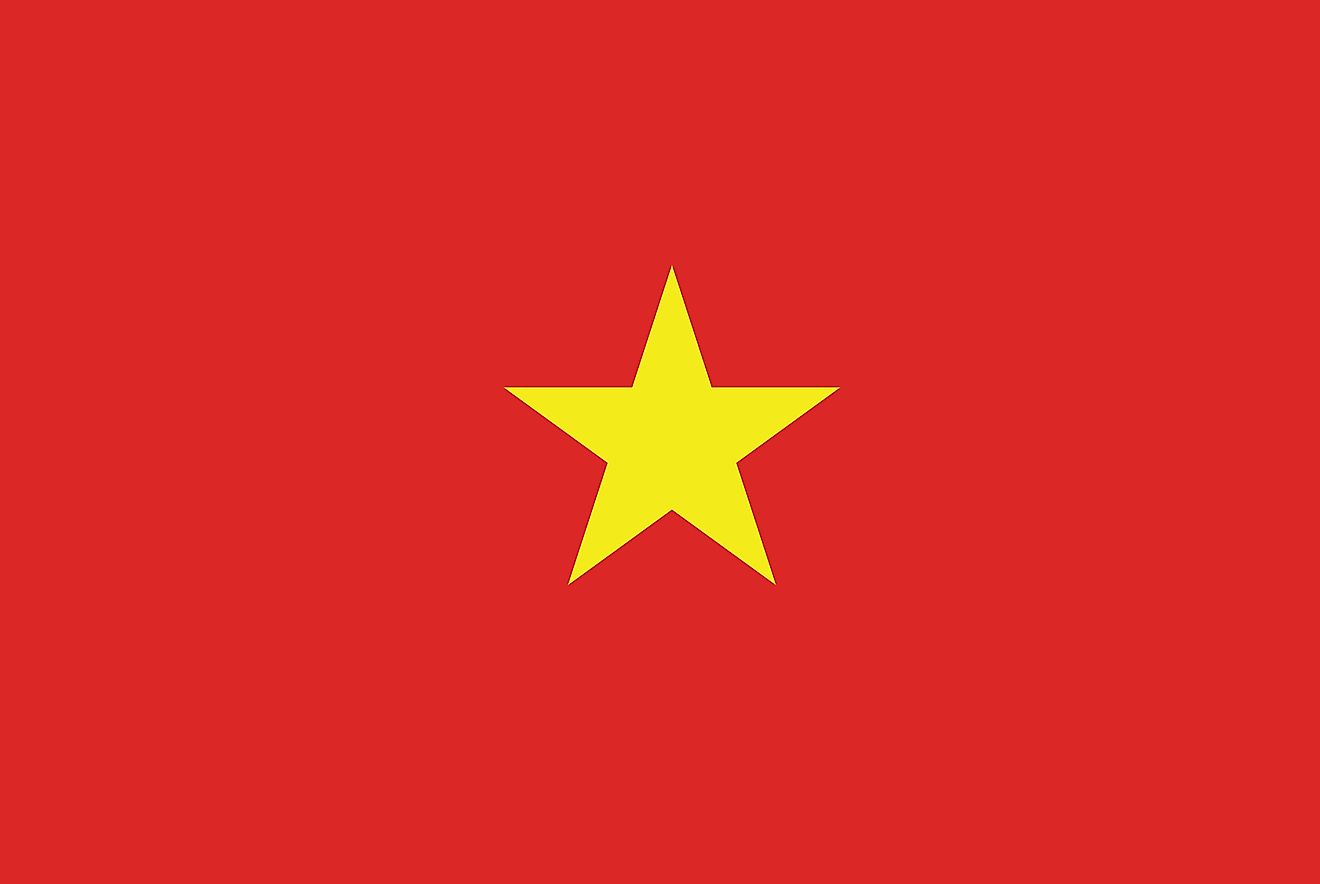
The National Flag of Vietnam was officially adopted on November 30, 1955.
The National Flag of Vietnam features a red background with a large yellow five-pointed star placed in the center. The red color symbolizes struggle, bloodshed, and revolution during the liberation struggle. The yellow five-pointed star represents the five elements of the populace in Vietnam - peasants, workers, intellectuals, traders, and soldiers - that unite to build socialism. The flag has a length-to-width proportion ratio of 2:3.
History of the Flag of Vietnam
Since the 19th century, Vietnam has been represented by red and gold flags. Emperor Gia Long was the first to use such flags. His flag featured a solid gold background with a red circle placed in the center. This flag was later replaced and modified by replacing the red circle with the red stripe. This traditional Vietnamese flag was ceased to be used when France occupied Vietnam. In 1887, Vietnam was represented by the national flag of France. The traditional Vietnamese flag made an appearance in 1940 and was initially used as the official flag of Vietnam’s resistance movement, in the French occupied the country. However, Vietnam was spitted into North Vietnam (occupied by Communist) and South Vietnam (an opposing government). Inspired by the historical flags of the Nation, South Vietnam used a golden flag which had three horizontal stripes of red. North Vietnam used the current national flag. After the Vietnam War and subsequent unification, the modern flag that was used by North Vietnam was adopted as the official flag of Vietnam.
Symbols of Vietnam
Emblem of Vietnam
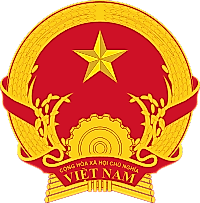
The National Emblem of Vietnam was adopted on November 30, 1955. It features a circular red background and a centrally placed yellow star. The yellow star represents the five elements of the populace in Vietnam - peasants, workers, intellectuals, traders, and soldiers - that unite to build socialism and a bright future for Vietnam. A cogwheel makes up the border and crops (rice ears) make up the base of the emblem. These represent the cooperation between agriculture and industrial labor. Below the emblem is the inscription: Cộng hòa Xã hội chủ nghĩa Việt Nam (“Socialist Republic of Vietnam”).
National Motto
“Independence, Freedom, and Happiness”
National Anthem
- Anthem Title: Tiến Quân Ca (“The Marching Song” )
- Music Composer: Nguyen Văn Cao
- Lyricist: Nguyen Văn Cao
- Date of Adoption: July 2, 1976
Tiến Quân Ca (“The Marching Song” ) is the national anthem of Vietnam. Both the music of the anthem and its lyrics have been created by Nguyen Văn Cao. The anthem was officially adopted as the national anthem of the Socialist Republic of Vietnam on July 2, 1976 upon the reunification of South Vietnam and North Vietnam.
Tiến Quân Ca (Vietnamese)
1.
Đoàn quân Việt Nam đi
Chung lòng cứu quốc
Bước chân dồn vang trên đường gập ghềnh xa
Cờ in máu chiến thắng mang hồn nước,
Súng ngoài xa chen khúc quân hành ca.
Đường vinh quang xây xác quân thù,
Thắng gian lao cùng nhau lập chiến khu.
Vì nhân dân chiến đấu không ngừng,
Tiến mau ra sa trường,
Tiến lên, cùng tiến lên.
Nước non Việt Nam ta vững bền.
2.
Đoàn quân Việt Nam đi
Sao vàng phấp phới
Dắt giống nòi quê hương qua nơi lầm than
Cùng chung sức phấn đấu xây đời mới,
Đứng đều lên gông xích ta đập tan.
Từ bao lâu ta nuốt căm hờn,
Quyết hy sinh đời ta tươi thắm hơn.
Vì nhân dân chiến đấu không ngừng,
Tiến mau ra sa trường,
Tiến lên, cùng tiến lên.
Nước non Việt Nam ta vững bền.
“The Marching Song”
1.
Soldiers of Vietnam, we go forward,
With the one will to save our Fatherland,
Our hurried steps are sounding on the long and arduous road.
Our flag, red with the blood of victory, bears the spirit of our country.
The distant rumbling of the guns passes over the bodies of our foes.
Overcoming all hardships, together we build our resistance bases.
Ceaselessly for the people’s cause let us struggle,
Let us hasten to the battle-field!
Forward! All together advancing!
Our Vietnam is strong, eternal.
2.
Soldiers of Vietnam, we go forward!
The gold star of our flag in the wind
Leading our people, our native land, out of misery and suffering.
Let us join our efforts in the fight for the building of a new life.
Let us stand up and break our chains
For too long have we swallowed our hatred.
Let us keep ready for all sacrifices and our life will be radiant.
Ceaselessly for the people’s cause let us struggle,
Let us hasten to the battle-field!
Forward! All together advancing!
Our Vietnam is strong, eternal.
The Currency of Vietnam is the đồng
The current official currency of Vietnam is đồng (VND, “₫") . The name of the currency has been derived from a Chinese loanword referring to bronze coins used in China in the ancient times.
The đồng was issued on May 3, 1978, by the country's main bank. Currently, the đồng has no subdivisions. At the time of its introduction, however, one đồng was equal to 10 hào which, in turn, was equal to 10 xu. These subdivisions have been discontinued.
Coins
Initially, aluminum coins were introduced in Vietnam. However, the chronic inflation prevailing in the country made the coins unpopular. For a long time, the use of coins in Vietnam became almost negligible. It was not until 2003 that the State Bank of Vietnam once more issued coins. The reintroduction of coins was made with the aim of replacing the small denomination banknotes. Coins were released in denominations of 200₫, 500₫, 1000₫, 2000₫, and 5000₫. Coins are hardly used in Vietnam in the present times. Since 2014, the coins are generally not accepted in retail and only a few banks in the country accept them.
Banknotes
The banknotes of Vietnam were introduced as the first đồng in 1978 and the second đồng in 1985. In 2003, the cotton banknotes of the country were replaced with those made of polymer. All banknotes of the country feature the portrait of Ho Chi Minh on the obverse side. Banknotes are available in denominations of 1,000₫, 2,000₫, 5,000₫, 10,000₫, 20,000₫, 50,000₫, 100,000₫, 200,000₫, and 500,000₫. Banknotes of 100₫, 200₫, and 500₫ are also available, although rarely used. Ho Chi Minh, a revolutionary Communist leader of the Viet Minh independence movement, is featured on the obverse of all the banknotes.
Historical Currencies of Vietnam
Prior to the Indochina Wars, the French occupied the region that is now independent Vietnam. Following the French defeat, Vietnam was politically divided into the two rival states of North and South Vietnam. The Vietnam War fought between these two rivals finally ended in the victory of North Vietnam in 1975. North and South Vietnam now reunited to form one single country.
During the colonial rule in the region, the French Indochinese piastre was used as the currency of the colony. However, the Viet Minh government established the đồng currency in 1946. The new currency symbolized that Vietnam was on the way to attain independence. The scenario was slightly different in the State of Vietnam (which was to become South Vietnam in 1954) where notes denominated both in đồng and piastres were issued in 1953. In 1975, following the fall of Saigon, the capital of South Vietnam, a new currency, the "liberation đong” was launched in the region.
After the unification of North and South Vietnam as one country, the currency of these two regions was also unified as one. The new đồng was equal to 0.8 "liberation" đồng and one Northern đồng. The currency unification happened in 1978.
